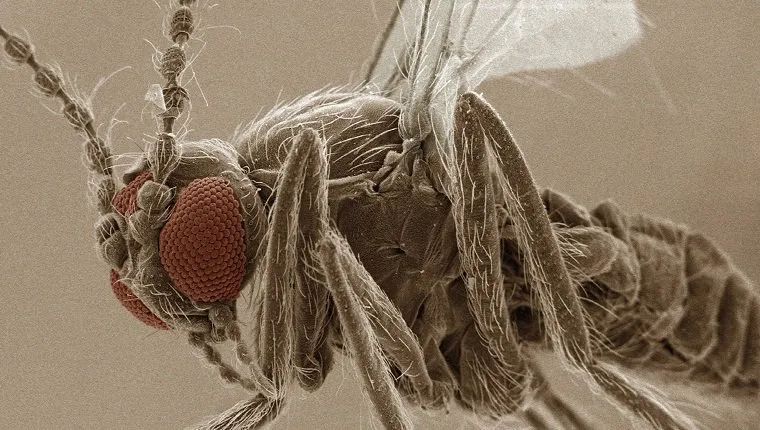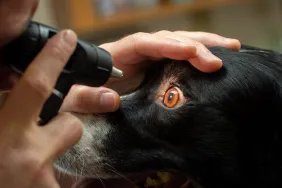Leishmaniasis in dogs is a disease caused by a Leishmania parasite infection. It can either result in a skin reaction or an abdominal organ reaction, known as black fever. Black fever is the more severe form of the disease.
Leishmaniasis is transmitted through the bites of infected sand flies; although, there are several strains of the disease with different methods of transmission. Dogs can transmit the disease to each other through contact with infected blood and secretions or from a mother dog to her puppies.
The condition can cause severe illness in dogs and, eventually, kidney failure. If you see the signs of leishmaniasis in your dog, then you must consult your veterinarian immediately for a proper diagnosis and treatment, and be sure to notify your vet if you’ve traveled anywhere with your dog recently.
Here’s what you should know about the symptoms, causes, and treatments for leishmaniasis in dogs.
Symptoms Of Leishmaniasis In Dogs

The symptoms of leishmaniasis in dogs are either cutaneous — meaning they affect the skin — or visceral — meaning they affect an abdominal organ.
However, the time it takes for symptoms to appear can vary greatly. Sometimes it takes as little as three weeks or as much as seven years for symptoms to appear. In dogs with strong immune systems, they may never appear at all.
Here are some of the symptoms that may appear in dogs who suffer from cutaneous leishmaniasis:
- Skin lesions
- Alopecia (hair loss)
- Dermatitis
- Scaly, thick, or discolored skin
- Chapped muzzle or footpads
- Skin nodules or lumps
- Long or brittle nails
When dogs develop visceral leishmaniasis, also known as black fever, they may show the following symptoms:
- Diarrhea
- Blood in stool
- Nose bleed
- Vomiting
- Exercise intolerance
- Swollen lymph nodes
- Enlarged spleen
- Decreased appetite
- Weight loss
- Fever
- Abnormal nails
- Similar symptoms to kidney disease
- Increased drinking and urination
- Joint pain
- Muscle inflammation
- Anemia
Causes Of Leishmaniasis In Dogs

Leishmaniasis in dogs can be caused by a few different factors depending on which strain of the disease is present.
Most strains are transmitted through the bites of infected sand flies, but some can be spread from dog to dog via contact with contaminated blood and bodily secretions or from a mother dog to her pups.
For unknown reasons, the Foxhound and Neapolitan Mastiff breeds have a predisposition to developing leishmaniasis.
The disease is most common in Mediterranean and South American areas, though it has also been found in Central America, Mexico, the United States, and as far north as Canada. It also rarely appears in parts of Europe.
It’s recommended that dogs bred or born in endemic locations be screened for the disease; however, the leptospirosis vaccine is known to result in false positives when testing for leishmaniasis, and false negatives can happen when tests are not sensitive enough.
Treatments For Leishmaniasis In Dogs

Treatment for leishmaniasis in dogs focuses on reducing symptoms and keeping the infection under control, as there is no outright cure for the disease. Various medications are available to treat certain strains, and research on the disease is still ongoing.
Your vet will help determine which course of medication is best for your dog depending on how far the disease has progressed and which strain of Leishmania is the cause of the infection.
Vets may also prescribe a high-protein diet designed to help treat kidney problems if they develop. Because there is no cure for leishmaniasis, the parasite will remain within a dog for life.
If your vet prescribes drugs or a new diet, then you may want to see if you can can fill the prescription online at Chewy’s pharmacy and have the items delivered.
While it is possible to keep the infection under control and, in some dogs, symptoms may be unnoticeable, the disease is likely to return at some point and require further treatment.
Have you ever cared for a dog who suffered from leishmaniasis? What kind of treatment did your veterinarian recommend? Let us know in the comments below.









